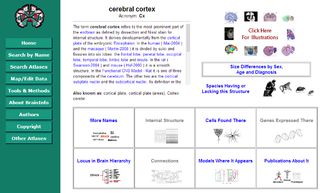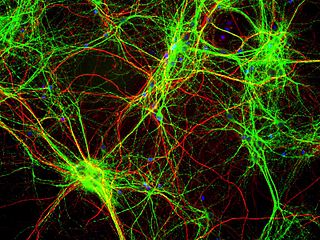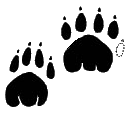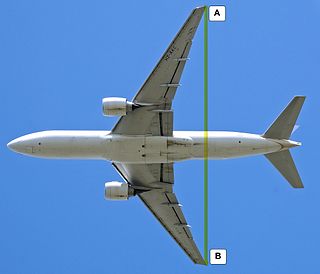 W
WAnatomical terminology is a form of scientific terminology used by anatomists, zoologists, and health professionals such as doctors.
 W
WThis article describes anatomical terminology that is used to describe the central and peripheral nervous systems - including the brain, brainstem, spinal cord, and nerves.
 W
WAnatomy is the branch of biology concerned with the study of the structure of organisms and their parts. Anatomy is a branch of natural science which deals with the structural organization of living things. It is an old science, having its beginnings in prehistoric times. Anatomy is inherently tied to developmental biology, embryology, comparative anatomy, evolutionary biology, and phylogeny, as these are the processes by which anatomy is generated, both over immediate and long-term timescales. Anatomy and physiology, which study the structure and function of organisms and their parts respectively, make a natural pair of related disciplines, and are often studied together. Human anatomy is one of the essential basic sciences that are applied in medicine.
 W
WAnatomical terminology is used to describe microanatomical structures. This helps describe precisely the structure, layout and position of an object, and minimises ambiguity. An internationally accepted lexicon is Terminologia Histologica.
 W
WAnatomical terminology is used to uniquely describe aspects of skeletal muscle, cardiac muscle, and smooth muscle such as their actions, structure, size, and location.
 W
WThe axial line is the line between two adjacent dermatomes that are not represented by immediately adjacent spinal levels. Although dermatomes are shown to be discrete segments on dermatomal maps, they are in fact not; adjacent dermatomes overlap with one another. This is one of the reasons for the variety of different dermatomal maps proposed. However, at axial lines, adjacent dermatomes do not overlap. An example of an axial line would be the line between the S2 and L4 dermatomes on the calf.
 W
WThe axillary joints are two joints in the axillary region of the body, and include the shoulder joint and the acromioclavicular joint.
 W
WDecussation is used in biological contexts to describe a crossing. In Latin anatomical terms, the form decussatio is used, e.g. decussatio pyramidum.
 W
WNeuroLex is a dynamic lexicon of neuroscience concepts. It is a structured as a semantic wiki, using Semantic MediaWiki. NeuroLex is supported by the Neuroscience Information Framework project.
 W
WNeuroNames is an integrated nomenclature for structures in the brain and spinal cord of the four species most studied by neuroscientists: human, macaque, rat and mouse. It offers a standard, controlled vocabulary of common names for structures, which is suitable for unambiguous neuroanatomical indexing of information in digital databases. Terms in the standard vocabulary have been selected for ease of pronunciation, mnemonic value, and frequency of use in recent neuroscientific publications. Structures and their relations to each other are defined in terms of the standard vocabulary. Currently NeuroNames contains standard names, synonyms and definitions of some 2,500 neuroanatomical entities.
 W
WPermanent cells are cells that are incapable of regeneration. These cells are considered to be terminally differentiated and non-proliferative in postnatal life. This includes neurons, heart cells, skeletal muscle cells and red blood cells. Although these cells are considered permanent in that they neither reproduce nor transform into other cells, this does not mean that the body cannot create new versions of these cells. For instance, structures in the bone marrow produce new red blood cells constantly, while skeletal muscle damage can be repaired by underlying satellite cells, which fuse to become a new skeletal muscle cell.
 W
WAn anatomical plane is a hypothetical plane used to transect the body, in order to describe the location of structures or the direction of movements. In human and animal anatomy, three principal planes are used:The sagittal plane or lateral plane is a plane parallel to the sagittal suture. It divides the body into left and right. The coronal plane or frontal plane (vertical) divides the body into dorsal and ventral portions. The transverse plane or axial plane (horizontal) divides the body into cranial and caudal portions.
 W
WPugmark is the term used to refer to the footprint of most animals. "Pug" means foot in Hindi. Every individual animal species has a distinct pugmark and as such this is used for identification.
 W
WThe standard anatomical position, or standard anatomical model, is the scientifically agreed upon reference position for anatomical location terms. Standard anatomical positions are used to standardise the position of appendages of animals with respect to the main body of the organism. In medical disciplines, all references to a location on or in the body are made based upon the standard anatomical position.
 W
WThe wingspan of a bird or an airplane is the distance from one wingtip to the other wingtip. For example, the Boeing 777–200 has a wingspan of 60.93 metres, and a wandering albatross caught in 1965 had a wingspan of 3.63 metres, the official record for a living bird. The term wingspan, more technically extent, is also used for other winged animals such as pterosaurs, bats, insects, etc., and other aircraft such as ornithopters. In humans, the term wingspan also refers to the arm span, which is distance between the length from one end of an individual's arms to the other when raised parallel to the ground at shoulder height at a 90º angle. Former professional basketball player Manute Bol stands at 7 ft 7 in (2.31 m) and owns one of the largest wingspans at 8 ft 6 in (2.59 m).